Phase Space
This note is about the space of possibility or search space that evolution, organisms, human designers or artificial systems can explore.
Cf.
- Configuration space
- Decision space
- Design universe
- Dynamical landscape
- Evolutionary space
- Exploratory domain
- Feasible region
- Feasible set
- Fitness landscape
- Form space
- Generative field
- Geometric variation space
- Idea space
- Modal space
- Morphological space
- Optimization landscape
- Outcome space
- Parameter space
- Phase space
- Potentiality space
- Search space
- Shape grammar space
- Solution space
- State space
- Strategy space
- Structural possibility space
- System topology
- The space of possibilities
- Typological field
The meanings and usage vary.
Physics and Dynamical Systems
Phase space is a multidimensional space in which all possible states of a system are represented, with each state corresponding to one unique point in the phase space. It is a mathematical framework used to describe the dynamics of a system, where each axis of the space represents one of the system's coordinates or momenta.
Cf.
- classical mechanics
- nonlinear dynamics
Biology and Evolutionary Theory
Cf.
This notion in the sense of total sum of possibilities does not apply or else the possibility is predefined and real innovation is impossible. Cf. Econormativity
Multiple interacting constraints (functional, developmental, historical, genetic) on high-dimensional spaces where living entities construct new evolutionary spaces rather than merely search through pre-existing landscapes, with path dependency limiting accessible trajectories.
Morphological space describes:
- Phenotypic variation
- Evolutionary pathways
- Developmental constraints
Longo, Giuseppe. “How Future Depends on Past and Rare Events in Systems of Life.” Foundations of Science 23, no. 3 (2018): 443–74. https://doi.org/10/g8q6q7.
Lamsdell, James C. “The Conquest of Spaces: Exploring Drivers of Morphological Shifts through Phylogenetic Palaeoecology.” Palaeogeography, Palaeoclimatology, Palaeoecology 583 (2021): 110672. doi:10.1016/j.palaeo.2021.110672.
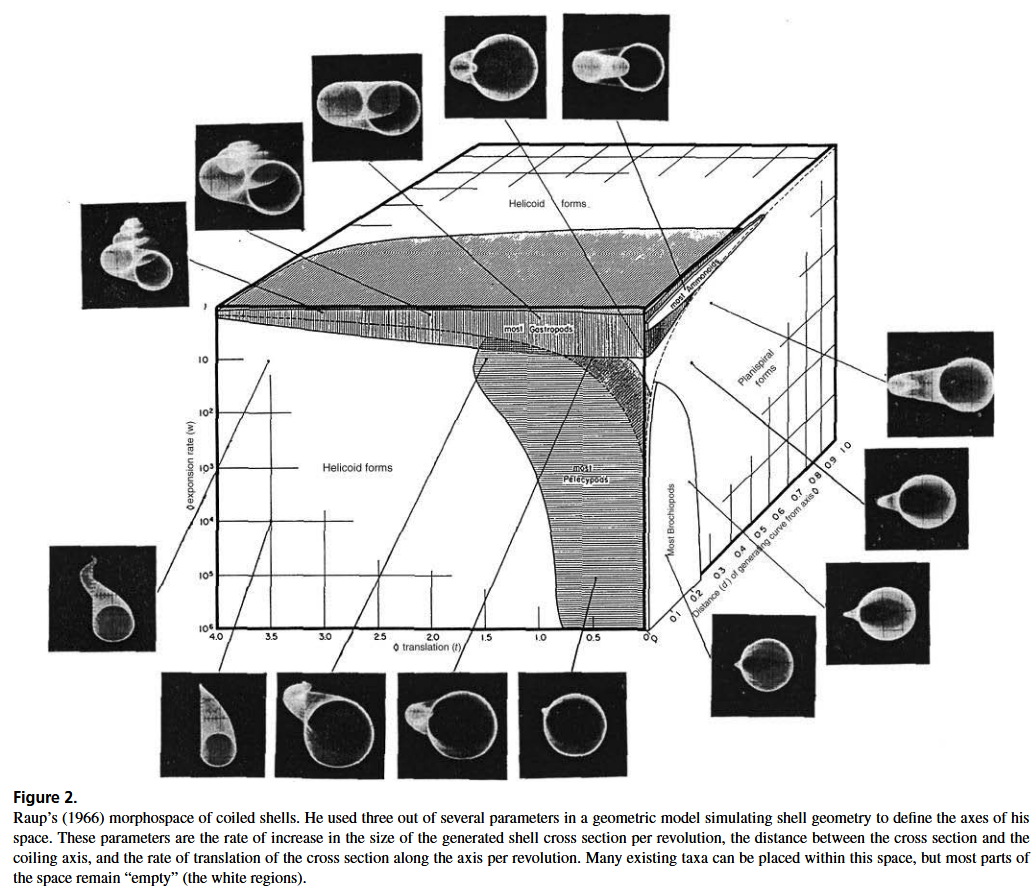

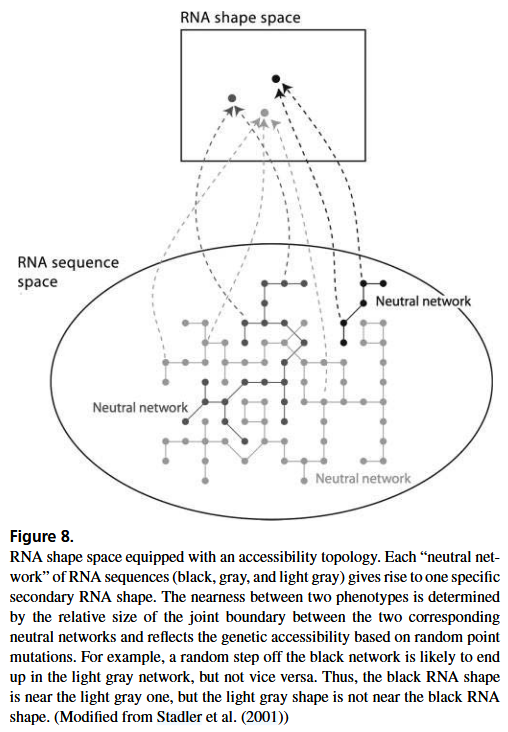
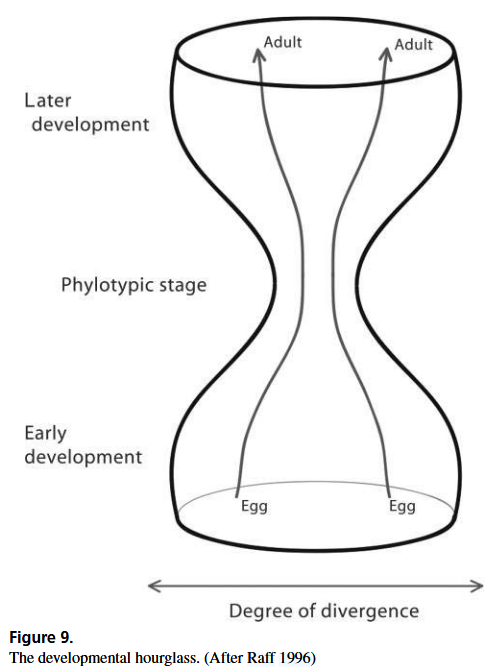
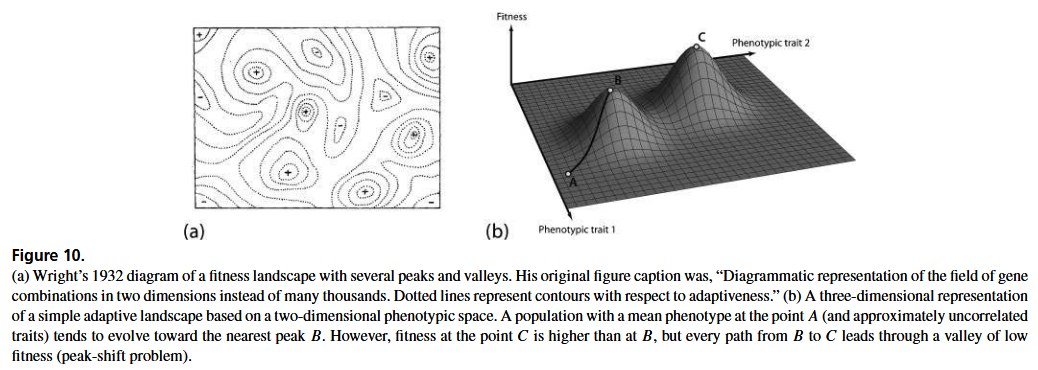
Mitteroecker, Philipp, and Simon M. Huttegger. “The Concept of Morphospaces in Evolutionary and Developmental Biology: Mathematics and Metaphors.” Biological Theory 4, no. 1 (2009): 54–67. doi:10/cx74fj.
McGhee, George R., The Geometry of Evolution: Adaptive Landscapes and Theoretical Morphospaces. Cambridge: Cambridge University Press, 2006.
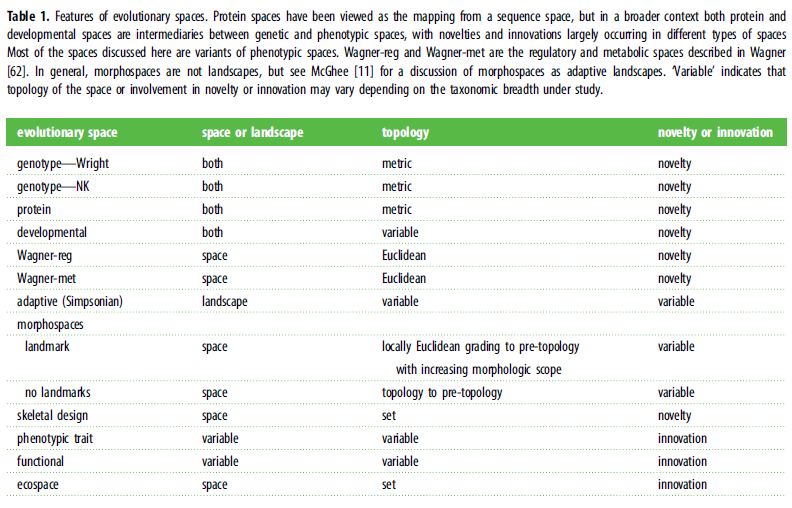
Erwin, Douglas H. “The Topology of Evolutionary Novelty and Innovation in Macroevolution.” Philosophical Transactions of the Royal Society B: Biological Sciences 372, no. 1735 (2017): 20160422. doi:10.1098/rstb.2016.0422.
Linguistics and Semiotics
Phonological space or semantic describe:
- Variations in sound or meaning
- Conceptual mappings
Design, Engineering, and Architecture
Morphological space and space of possibilities in:
- Parametric design
- Generative design
- Shape grammars
- Design space exploration
Oliveira, Vítor, ed. Morphological Research in Planning, Urban Design and Architecture. Cham: Springer, 2021.
Cognitive Science
Conceptual or possibility model:
- Human reasoning
- Decision-making
- Creativity and imagination
Aronowitz, Sara. “Locating Values in the Space of Possibilities.” Philosophy of Science 92, no. 1 (2025): 121–40. doi:10/g99d6v.
Human/Nonhuman Society and Culture
Laland, Kevin N., John Odling-Smee, and Marcus W. Feldman. “Niche Construction, Biological Evolution, and Cultural Change.” The Behavioral and Brain Sciences 23, no. 1 (2000): 131–46. doi:10/c58hwb.
Marks, Peter, Lasse Gerrits, and Johannes Marx. “How to Use Fitness Landscape Models for the Analysis of Collective Decision-Making: A Case of Theory-Transfer and Its Limitations.” Biology & Philosophy 34, no. 1 (2019): 7. doi:10/gjpt4h.
Path Dependency and Lock-In
Goldstein, Jenny E., Benjamin Neimark, Brian Garvey, and Jacob Phelps. “Unlocking ‘Lock-in’ and Path Dependency: A Review across Disciplines and Socio-Environmental Contexts.” World Development 161 (2023): 106116. doi:10/g83j86.
Méndez, Pablo, Jaime Amezaga, and Luis Santamaría. “Explaining Path-Dependent Rigidity Traps: Increasing Returns, Power, Discourses, and Entrepreneurship Intertwined in Social-Ecological Systems.” Ecology and Society 24, no. 2 (2019). doi:10/gkshvh.
Computer Science, Artificial Intelligence, Robotics
Solution space or search in:
- Algorithm design
- Machine learning
- Evolutionary computation
- Constraint satisfaction problems
Aaron, Eric, Joshua Hawthorne-Madell, Ken Livingston, and John H. Long. “Morphological Evolution: Bioinspired Methods for Analyzing Bioinspired Robots.” Frontiers in Robotics and AI 8 (2022): 717214. doi:10/g9pv2h.
References
Backlinks